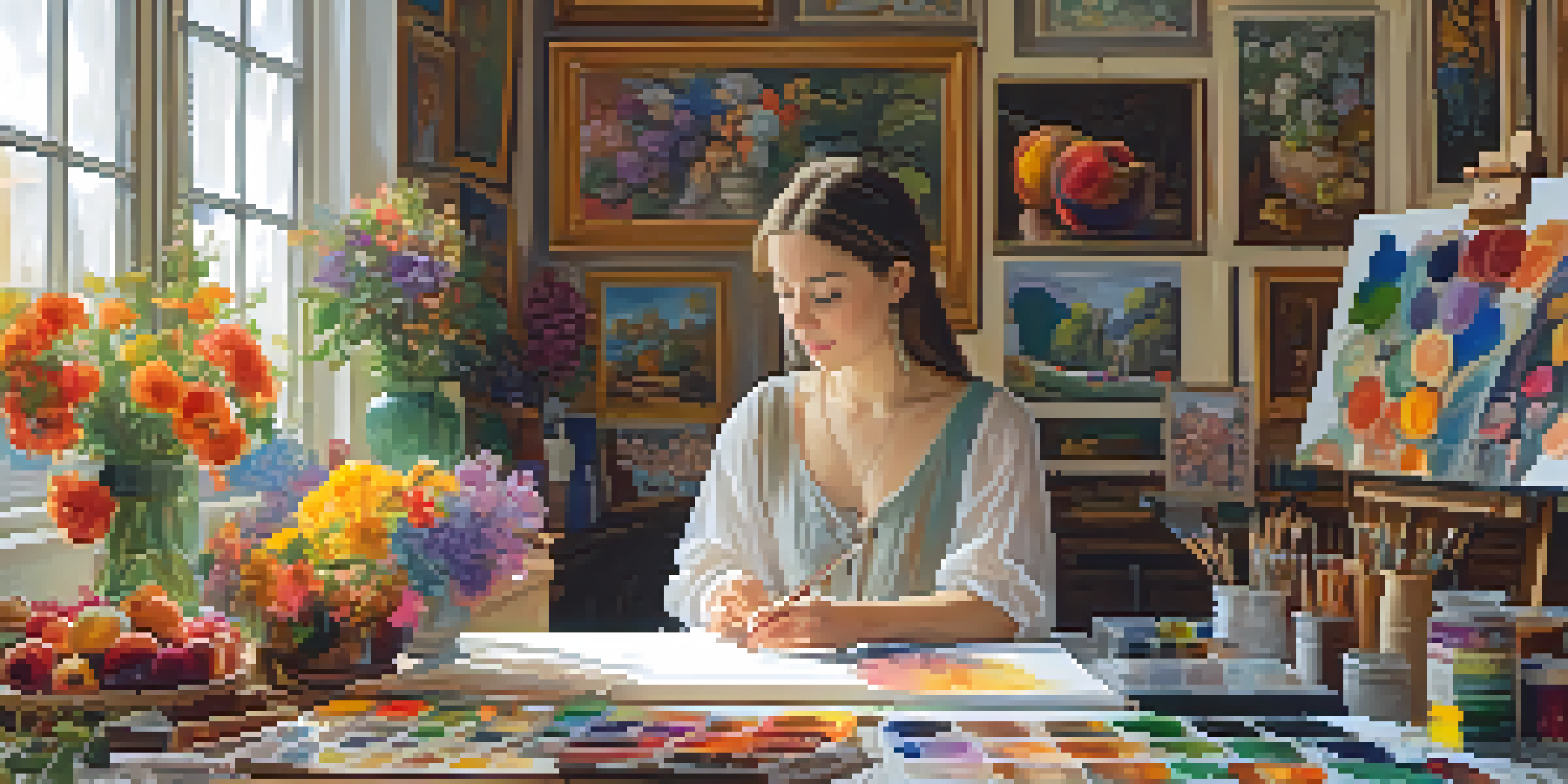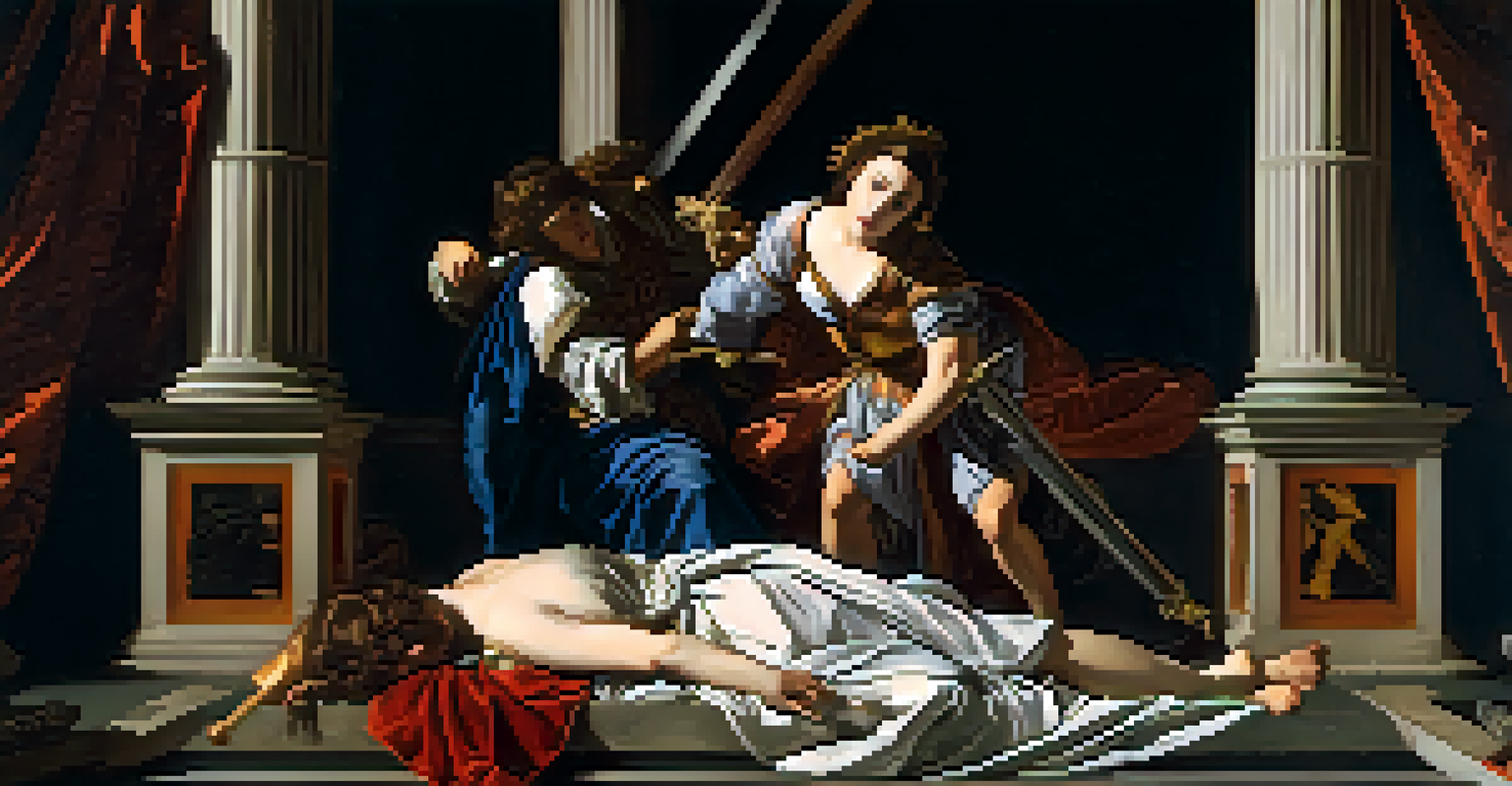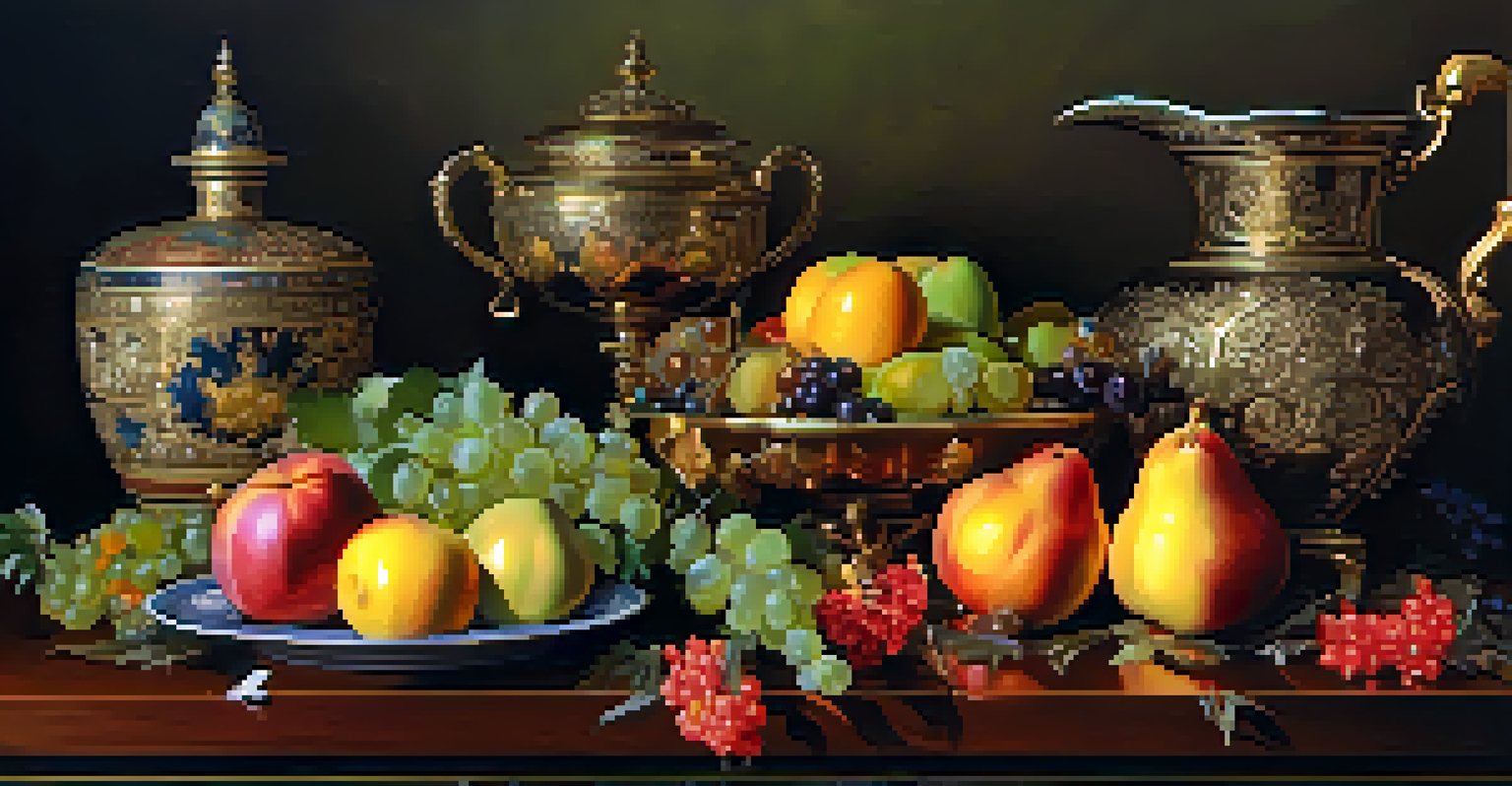Noteworthy Female Painters of the Renaissance Era

The Renaissance: A Brief Overview of the Era
The Renaissance, spanning roughly from the 14th to the 17th century, marked a revival of art, culture, and intellect in Europe. This period is often celebrated for its groundbreaking developments in painting, sculpture, and architecture. However, it's essential to recognize that while many male artists dominated the scene, women were also making significant contributions, albeit often overlooked.
Women have been the silent architects of art history, their contributions echoing through the ages.
During the Renaissance, the societal roles of women were largely confined to domestic spheres. Despite these limitations, some women found ways to pursue their artistic passions, often through family connections or by challenging societal norms. Their work not only enriched the art world but also paved the way for future generations of female artists.
By examining the lives and works of these noteworthy female painters, we can gain a deeper appreciation for their artistry and the barriers they overcame. This exploration sheds light on the often-unrecognized narratives that shaped the Renaissance art movement.
Sofonisba Anguissola: A Pioneer in Portraiture
Sofonisba Anguissola, born in 1532, stands out as one of the first female artists to gain prominence in the Renaissance. Her portraits, which often depicted her family and notable figures, showcased a remarkable ability to capture emotion and personality. This skill earned her recognition from the likes of King Philip II of Spain, who commissioned several works from her.

Anguissola's techniques were innovative for her time, blending realism with a unique style that emphasized the subject's character. She was also one of the first women to receive formal training in art, which was exceptionally rare in an era when educational opportunities for women were limited. Her accomplishments not only challenged gender norms but also inspired future female artists to pursue their ambitions.
Female Artists Shaped the Renaissance
Despite societal limitations, women like Sofonisba Anguissola and Artemisia Gentileschi made significant contributions to art, challenging gender norms and enriching the cultural landscape.
Through her work, Sofonisba Anguissola paved the way for women in the arts, proving that talent knows no gender. Her legacy is a testament to the importance of recognizing and celebrating female contributions to art history.
Artemisia Gentileschi: A Voice of Resilience
Artemisia Gentileschi, born in 1593, is renowned for her powerful and dramatic paintings that often depict strong female figures from mythology and the Bible. Her life story is one of resilience, having faced significant personal struggles, including a well-documented trial for assault. Despite these challenges, she channeled her experiences into her art, creating works that resonate with themes of empowerment and justice.
Creative work is a gift for all to share, and the voices of women in art deserve to be celebrated.
Gentileschi’s style was heavily influenced by the Caravaggisti movement, characterized by its bold use of light and shadow, known as chiaroscuro. Her paintings, such as 'Judith Slaying Holofernes,' are celebrated for their emotional intensity and technical skill. Artemisia's ability to portray complex female characters set her apart from her contemporaries and opened doors for women artists in a male-dominated field.
Her determination and talent not only established her as a prominent artist of her time but also transformed her into a symbol of female strength in the arts. Gentileschi's legacy continues to inspire artists and feminists alike, reminding us of the importance of women's voices in history.
Fede Galizia: The Still Life Innovator
Fede Galizia, born in 1578, is often celebrated as one of the first female still life painters in the Renaissance. Her meticulous attention to detail and vibrant compositions set her apart from her peers. Galizia's works often featured lavish displays of food and flowers, reflecting the opulence of her time while showcasing her exceptional artistic skills.
What makes Galizia's work particularly noteworthy is her ability to infuse emotion into still life subjects, elevating them beyond mere representation. Through her art, she captured the beauty of everyday objects, inviting viewers to appreciate the ordinary. Her paintings also served as a reflection of the era's growing interest in naturalism and realism.
Legacy of Resilience and Talent
The stories of female painters not only highlight their artistic achievements but also serve as powerful reminders of the importance of recognizing women's voices in art history.
Despite the challenges she faced as a woman artist, Galizia's innovative approach to still life painting earned her respect and recognition. Today, her contributions are increasingly acknowledged, highlighting the importance of female artists in shaping the Renaissance art landscape.
Plautilla Nelli: The First Known Female Painter of Florence
Plautilla Nelli, born in 1524, holds the distinction of being the first-known female painter of Florence. As a self-taught artist, she created a unique niche for herself in a male-dominated art world. Nelli's works often featured religious themes, reflecting her deep faith and the influences of the convent where she lived.
Her most famous work, 'The Last Supper,' showcases her ability to blend traditional religious iconography with her distinct style. Nelli's paintings were characterized by their vibrant colors and intricate details, which captivated viewers and conveyed spiritual depth. Her dedication to her craft despite societal constraints is a testament to her determination.
Nelli's legacy is a powerful reminder of the countless women who have contributed to art history, often without recognition. By shining a light on her accomplishments, we can better appreciate the diversity and richness of Renaissance art.
Lavinia Fontana: A Trailblazer in Portrait Painting
Lavinia Fontana, born in 1552, is often celebrated for her exceptional portraiture and ability to capture the essence of her subjects. She gained fame in Bologna, where she became the first woman to establish a successful career as a painter. Fontana's portraits were not only aesthetically pleasing but also conveyed the social status and personality of her sitters.
One of her notable achievements was her ability to balance family life with her professional aspirations. Fontana was a wife and mother, yet she continued to produce remarkable works, often painting commissioned portraits for prominent families. This ability to navigate societal expectations while pursuing her passion is truly inspiring.
Community and Collaboration Flourished
Female painters created supportive networks that fostered creativity and collaboration, influencing both their contemporaries and future generations of artists.
Fontana's success and visibility in the art world challenged traditional gender roles and opened the door for women artists. Her legacy endures today as a symbol of perseverance and talent, proving that women have always played a vital role in art history.
The Influence of Female Painters on Art and Society
The contributions of female painters during the Renaissance went beyond mere artistry; they also played a crucial role in shaping societal perceptions of women. By pursuing their passions and achieving recognition, these artists challenged prevailing notions about gender and creativity. Their works often depicted female subjects in powerful roles, helping to redefine the narrative around women in art.
As more women began to emerge in the art world, they created a community that supported one another, fostering creativity and collaboration. This network allowed for the exchange of ideas and techniques, which enriched the artistic landscape of the time. The influence of these women can still be felt today as contemporary female artists continue to draw inspiration from their predecessors.

Recognizing and celebrating the achievements of female painters from the Renaissance era is essential for understanding the broader history of art. Their stories remind us that talent knows no gender, and their legacy inspires continued advocacy for women's representation in the arts.
Conclusion: Celebrating the Legacy of Female Renaissance Artists
In conclusion, the Renaissance was not solely a male-dominated era; it was also a time of remarkable female talent. Artists like Sofonisba Anguissola, Artemisia Gentileschi, and Lavinia Fontana, among others, broke barriers and left an indelible mark on art history. Their stories of resilience and creativity remind us of the importance of recognizing all voices in the narrative of art.
By celebrating these female painters, we not only honor their contributions but also inspire future generations to pursue their artistic dreams. The impact of these women extends beyond their lifetime, influencing countless artists and reshaping our understanding of art's history. Their legacy is a powerful reminder that creativity thrives when diverse perspectives are embraced.
As we reflect on the Renaissance and its noteworthy female painters, let us commit to continuing this journey of recognition and inclusion in the arts. By doing so, we ensure that the legacies of these remarkable women are not forgotten and that their stories continue to inspire for years to come.